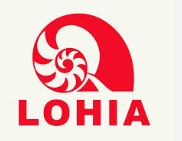Any policy towards battery swapping infrastructure can play an important role in the industry growth as the battery is the 50 percent cost of the vehicle. Once this policy is implemented by the government, 50 percent of the vehicle cost will be cut and it will be the biggest push to the two-wheeler and three-wheeler industry, shares Ayush Lohia, CEO, Lohia Auto Industries in an interview with Anurima Mondal, Editor of EVolution Auto India.

Q: Please walk us through Lohia Auto’s business journey and its significant milestones and crucial achievements.
Ayush Lohia: Lohia Auto was established in the year 2008, with the objective of providing clean, efficient, reliable and affordable inner-city as well as rural transportation. Within a short span of 5-8 years, we have captured the electric vehicle market and became the first Indian company to set up our own integrated electric vehicle manufacturing facility at Kashipur, Uttarakhand.
We use futuristically designed state-of-the-art equipment, managed by one of the most modern Cloud-ERP technology. The manufacturing plant has the capacity to roll out 1,00,000 vehicles annually, along with a high level of vertical integration and a large share of local suppliers. The facility, being operated in a green industrial belt, supports our philosophy that embodies our goal of creating environment-friendly products and solutions.
We have expanded our product line and launched a series of both Passenger and Cargo segments with an incredible mix of features. As an achievement, we have sold over 50,000 electric vehicles in India.
Q: What are your expansion plans in terms of product development, dealer network and new markets?
Ayush Lohia: In the next two to three years, we will be focusing on E-rickshaw and E-auto segment and recently, we have launched Humsafar L5 Passenger, L5 Cargo, Narain ICE L3, Narain DX, and Narain C+, Narian Base SS, iCH, Comfort F2F+, Utility Vehicle each equipped with advanced features like keyless entry, LED lights, and a new butterfly design. Notably, the Narain+ offers a versatile Flexi model, while all vehicles boast a robust 60V battery, ensuring reliable performance and extended range.
Q: In your opinion, what is the importance of extending the FAME II subsidy scheme for industry growth?
Ayush Lohia: With no subsidy, IC Vehicles will be cheaper than EVs and this will make the upfront cost of the vehicle higher which will make consumers buy IC vehicles over EVs.
Q: Last year, Lohia ventured into the battery-swapping station business by inaugurating its first facility in Visakhapatnam. Please tell us more about this development. Do you have any similar projects in the pipeline?
Ayush Lohia: Our first battery-swapping station in Visakhapatnam has marked a significant milestone in promoting sustainable transportation. The station offers a convenient and efficient way for electric vehicle owners to swap their batteries, reducing downtime and encouraging the adoption of eco-friendly transportation.
We believe if the government can announce any policy towards battery swapping infrastructure then it will play a very important role in the industry growth as the battery is the 50 percent cost of the vehicle. Once this policy is implemented by the government, 50 percent of the vehicle cost will be cut and it will be the biggest push to the two-wheeler and three-wheeler industry.
Q: Technological innovations and the growth of digitalization are driving a significant evolution in every sector. How is Lohia Auto using such tools in its services and solutions?
Ayush Lohia: We have expanded our product portfolio in the L3 and L5 categories. These models have a bold look with new graphics and affordable prices, making electric mobility more accessible to a broader audience. This competitive pricing is expected to set the stage for a new era of affordability and innovation in the E3W market.
Q: The current Indian government has set a target of achieving 30 percent electric vehicle penetration by 2030. What are your views on the EV industry?
Ayush Lohia: What I believe is the EV industry in India is poised for growth, driven by government support, increasing demand, and improving infrastructure. We need to address challenges like high upfront costs, inadequate charging infrastructure, dependence on imported batteries and limited recycling infrastructure, which will be crucial to achieving the 2030 target. With innovative business models, local manufacturing, and public-private partnerships, India can become a leader in the global EV market.